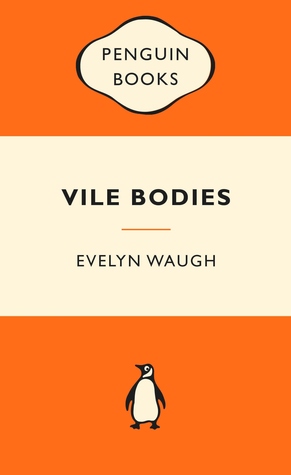Our book group choice for May 2017 is Vile Bodies by Evelyn Waugh. Adam Fenwick-Symes is a man of the world: a novelist, recently returned from Paris, and one of the “bright young people.”
Vile Bodies is a satirical novel by Evelyn Waugh, published in 1930. It is set in the late 1920s, in the aftermath of World War I, and follows the lives of a group of young people in London who are members of the “Bright Young Things” set. These young people are wealthy, privileged, and hedonistic, and they spend their days partying, drinking, and sleeping around.
The novel’s protagonist is Adam Fenwick-Symes, a struggling writer who is engaged to Nina Blount, a member of the Bright Young Things set. Adam is constantly trying to find a way to marry Nina, but he is always thwarted by her wealthy and disapproving father.
In the meantime, Adam and Nina are swept up in the hedonistic world of the Bright Young Things. They attend endless parties, drink themselves into oblivion, and sleep with multiple partners. However, their lives are not without their problems. Adam is plagued by self-doubt, and Nina is constantly struggling with her own demons.
The novel also satirizes the press, which is constantly hounding the Bright Young Things for stories. The press is portrayed as being voyeuristic and exploitative, and it is shown to be responsible for creating a false image of the Bright Young Things.
Vile Bodies is a dark and cynical novel, but it is also funny and witty. Waugh’s satire is sharp and incisive, and he does not shy away from showing the darker side of the Bright Young Things’ world. The novel is a cautionary tale about the dangers of hedonism and the emptiness of a life without purpose.
Here are some of the key themes of Vile Bodies:
- The meaninglessness of life after the war.
- The emptiness of the hedonistic lifestyle.
- The power of the press.
- The nature of love and marriage.
- The importance of family and tradition.
Vile Bodies is a complex and challenging novel, but it is also a rewarding one. It is a powerful satire of the Bright Young Things set, but it is also a moving and thought-provoking exploration of the human condition.
Discussion Questions Vile Bodies
- The book is a sort of pastiche, a collection of scenes. Why is it presented in this way and how did it affect your attitudes toward the novel?
- There are two main plot elements: Adam’s quest to marry Nina and the establishment disapproval of the younger generation. Were you able to follow along?
- What did you make of Adam?
- There are three deaths in the book – Flossie, Mr Chatterbox and Agatha – what is Waugh trying to say with each?
- How does Waugh use religion in the book? What is he saying about it as an institution?
- What role does the drunken Major play?
- What did you make of the final scene?
- Do you feel there’s a historical parallel from the Bright Young People of Waugh’s book and the early 21st century Millennial generation?
- Many of the characters are described as either outright drunk or drinking. Why?
- Which was your favourite character?
- Waugh enjoys creating very colourful character names – eg. Mr. Outrage as the Prime Minister and the Daily Excess – what did you make of this?
- To whom would you recommend this book? And for what reasons would you do so?
Individual Comment
DKB's Rating 




Sue's Rating 




Jo's Rating 




EmmaT's Rating 




Anthony's Rating 




Baljit's Rating 




Catherine's Rating 




Willow's Rating 





